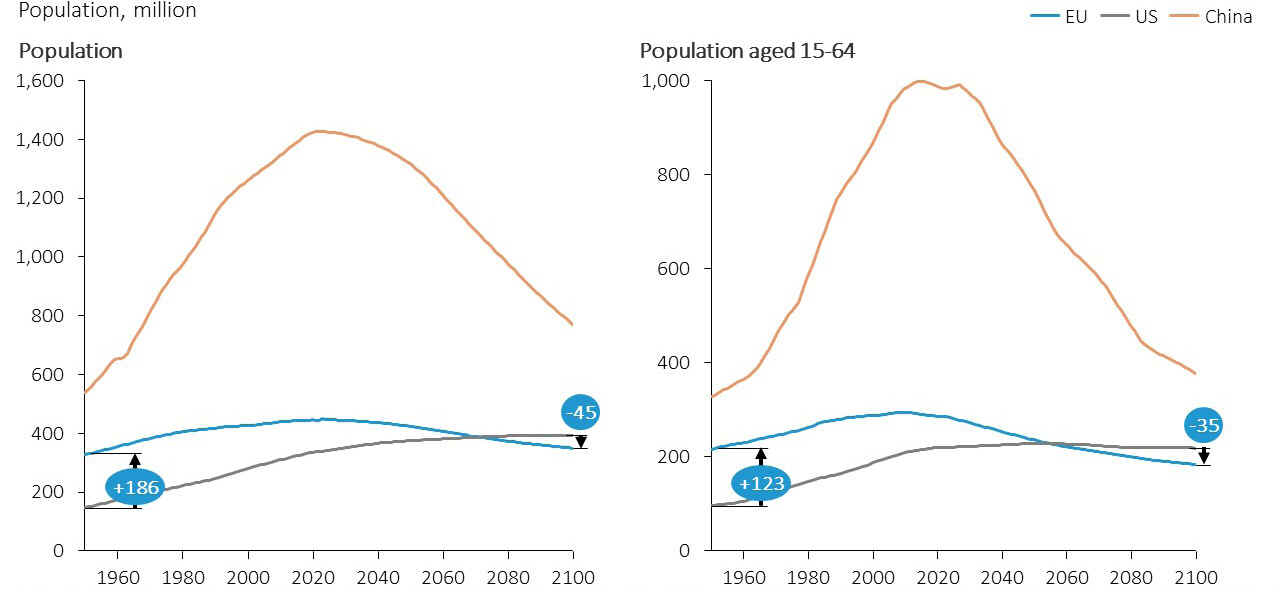
..Textos.....Artículos ...INDEX
Demographic developments and the labour force
Informe Draghi 2024 09 09 pg. 24
Historically, labour force growth was a significant driver of GDP growth across all major economies as the working age population increased steadily. In the EU, however, growth of the working age population has slowed since the 1990s and has started declining on aggregate over the past decade, mainly owing to declining birth rates. Positive net inward migration does not compensate for the EU’s population decline. Long-term population projections suggest a further continued decline of the EU’s population. This decline stands in contrast to the US, whose population is expected to continue to grow during the next decades, albeit at a slowing pace.
FIGURE 4 Long-term population developments and projects Population, million
Note: The population projections are based on the probabilistic projections of total fertility and life expectancy at birth. These projections were made using a Bayesian Hierarchical Model. The figures display the median projections. The projections reflect a contribution of historical migration patterns. Paper on methodology.

Source: United Nations World Population Prospects, 2022.
Projected overall population dynamics are also reflected in the growth of the European working age population, which started to decline around 2010. The projected decline in the Chinese working age population exceeds that of the EU. It is expected to drop from about 1 billion [1.000 million] people aged 15-64 years to around 600 million in the next 40 years.